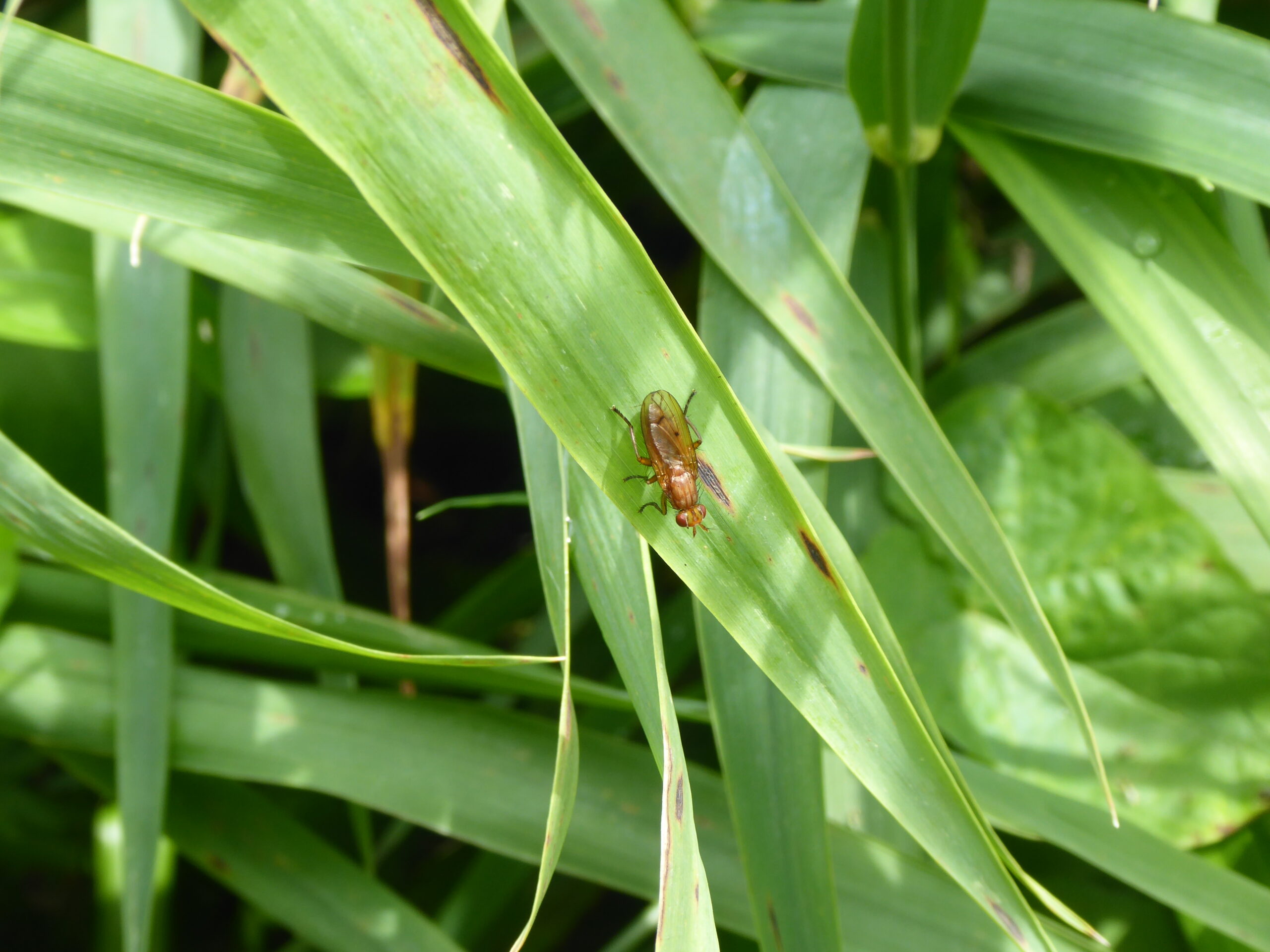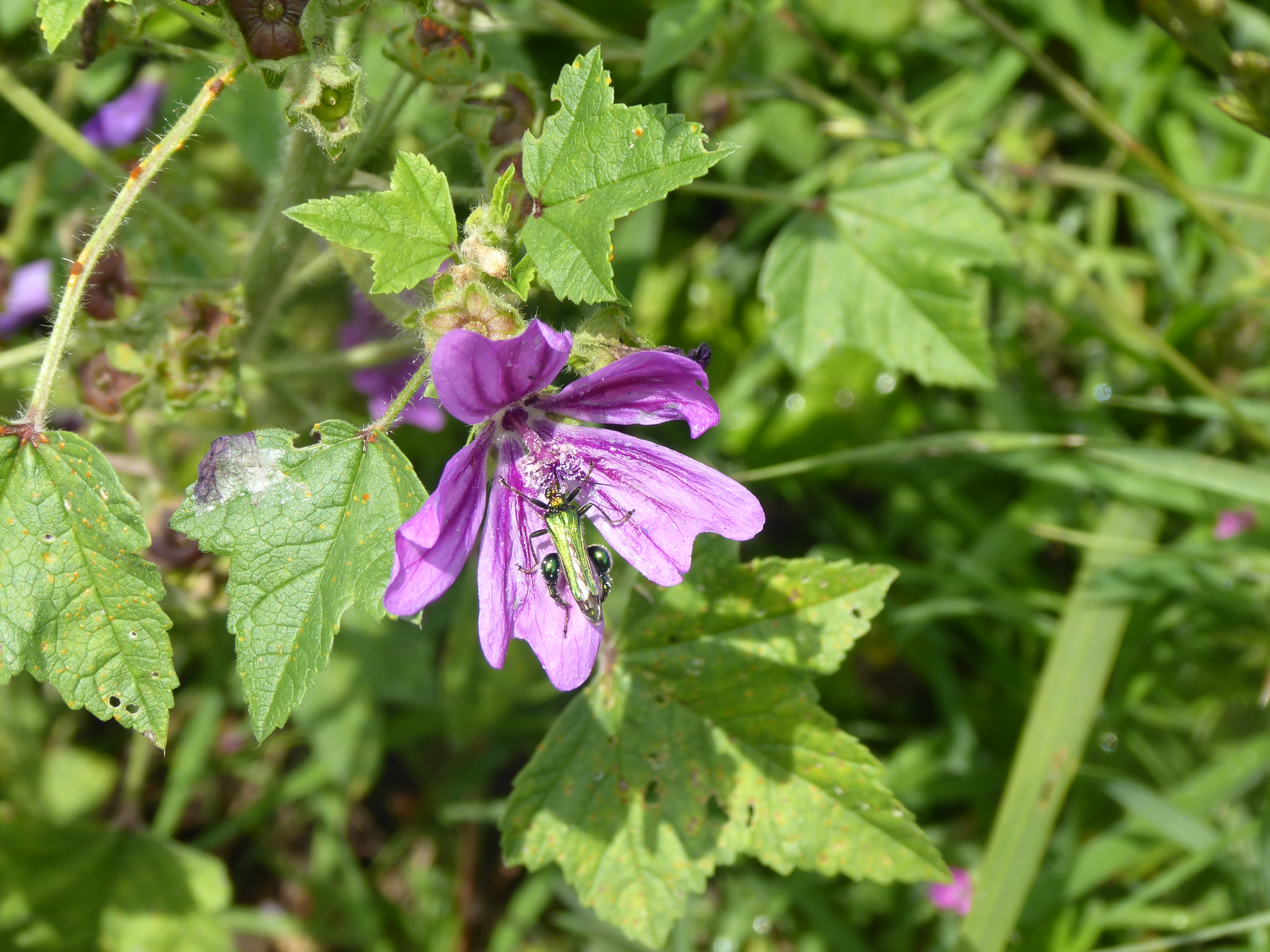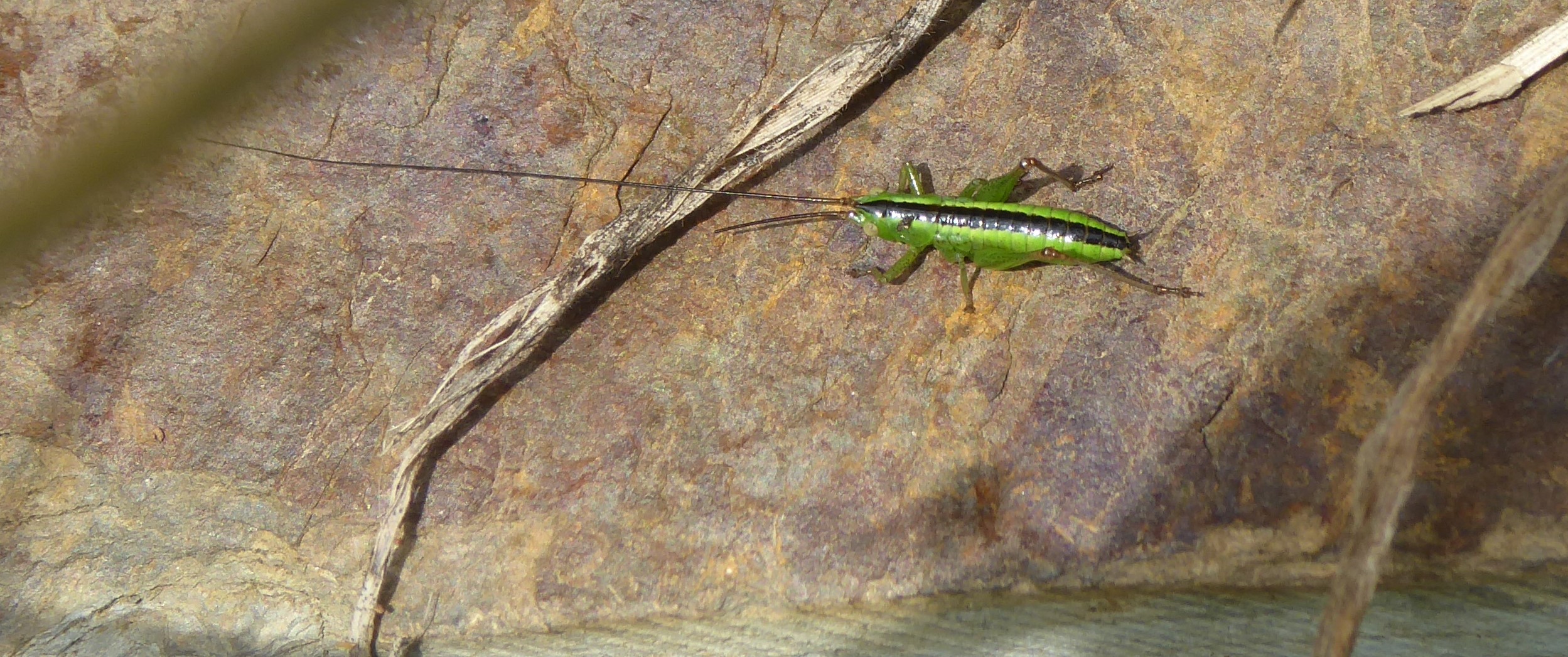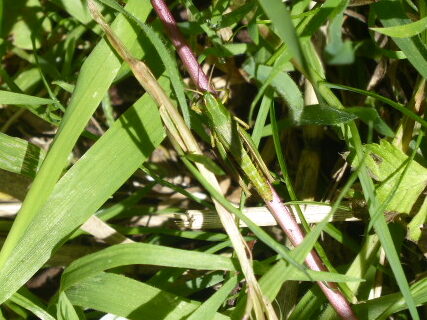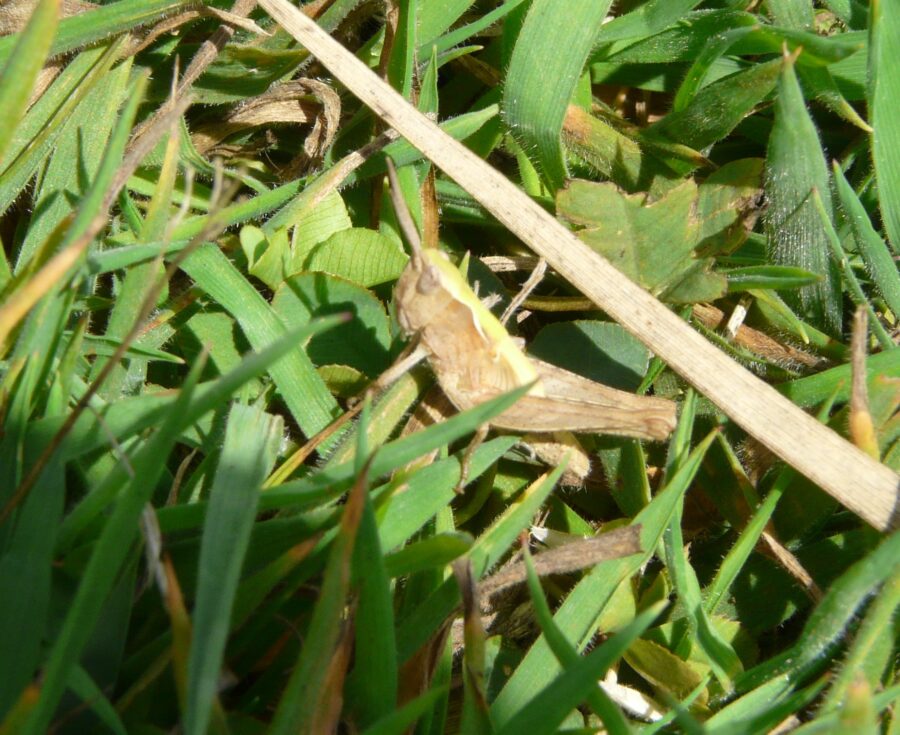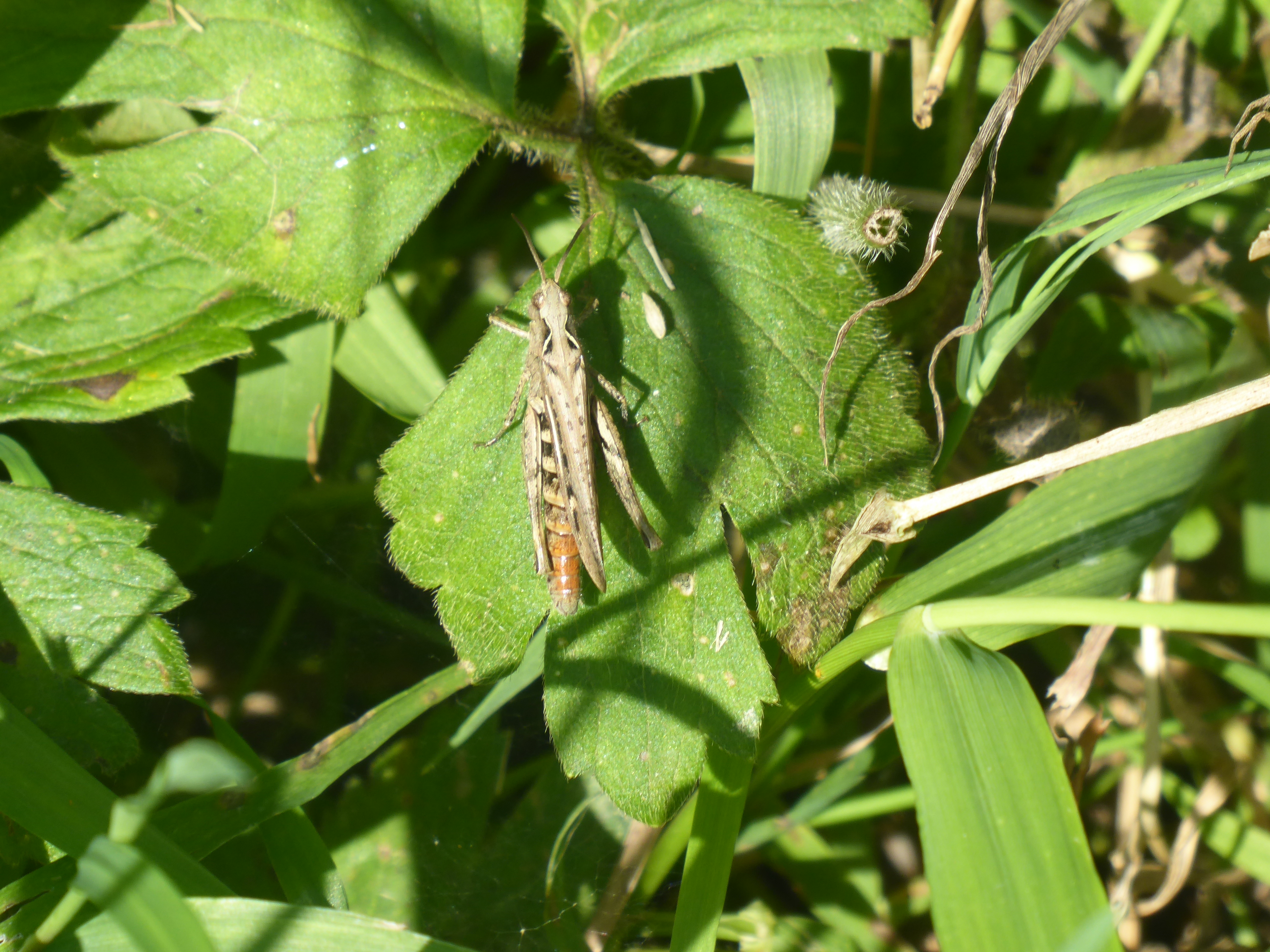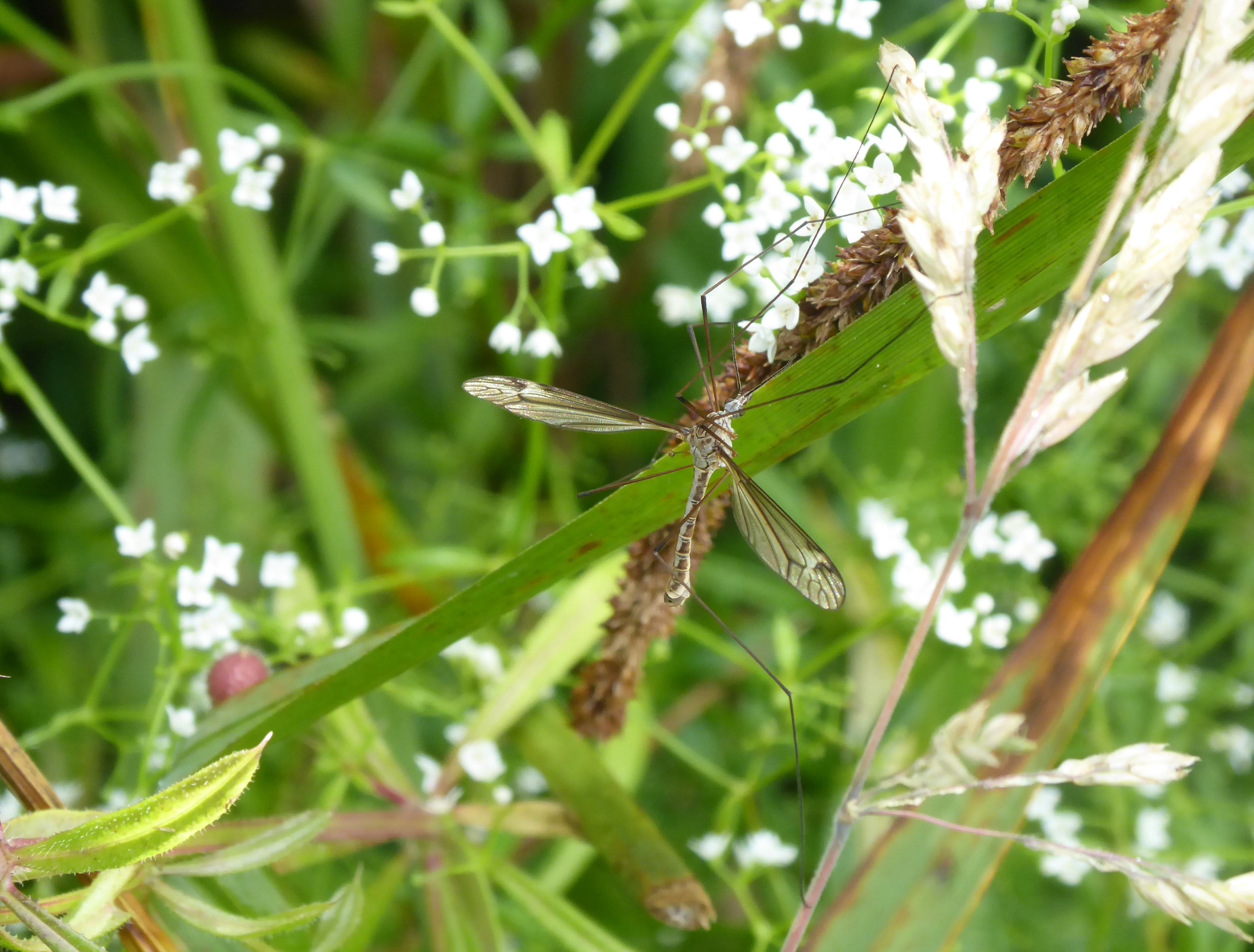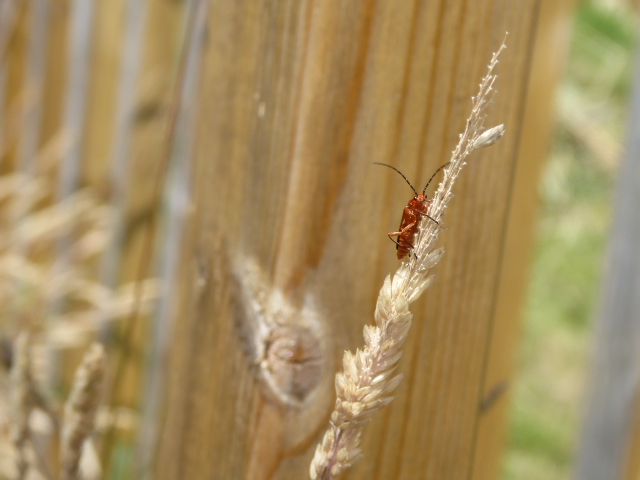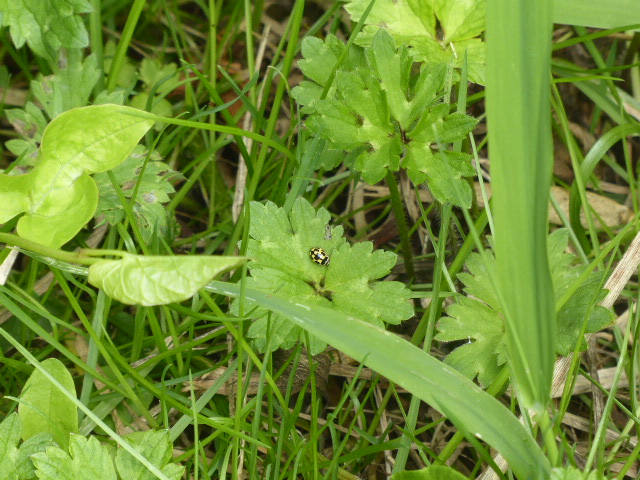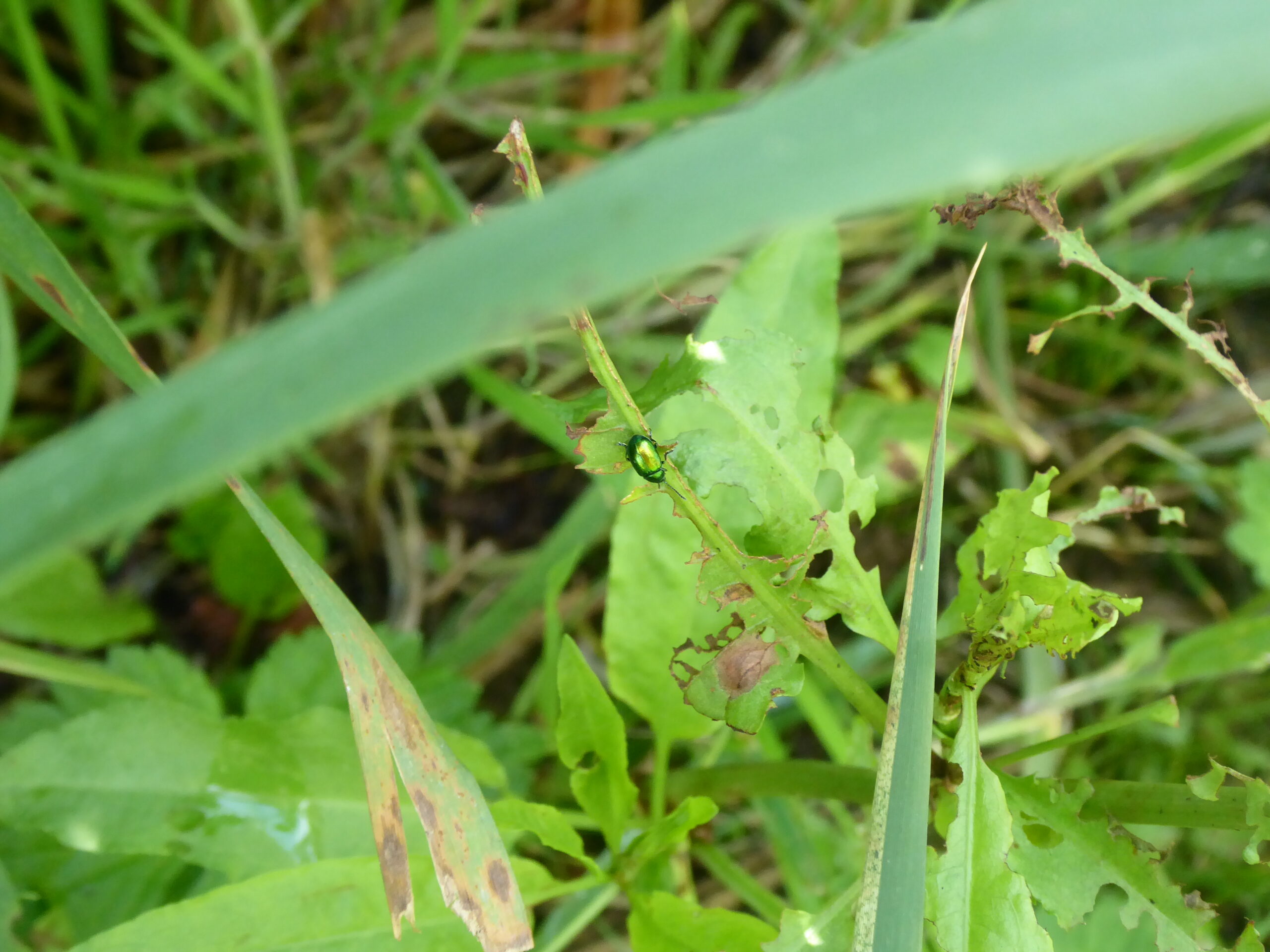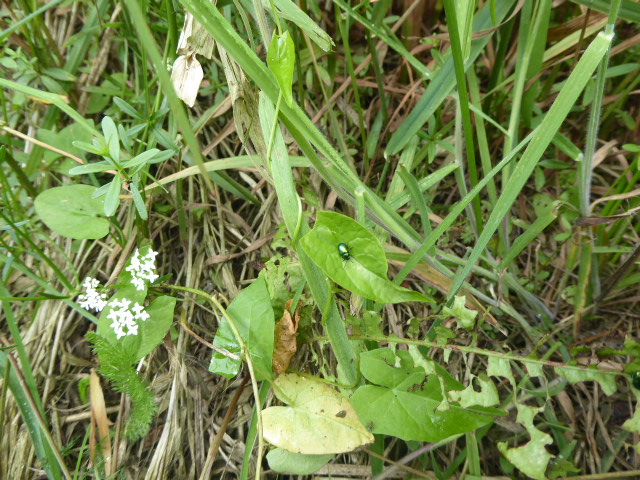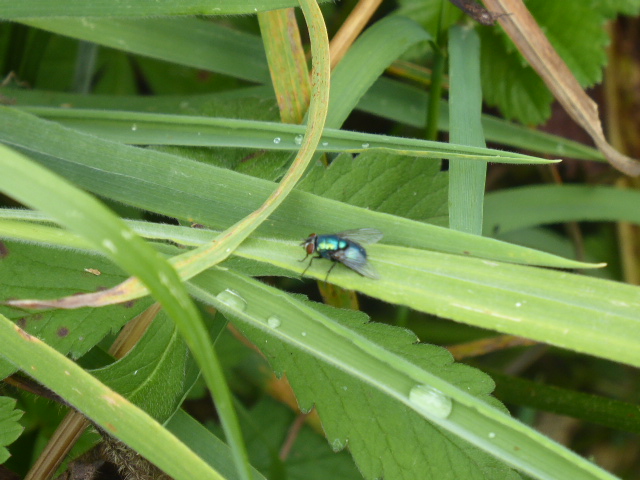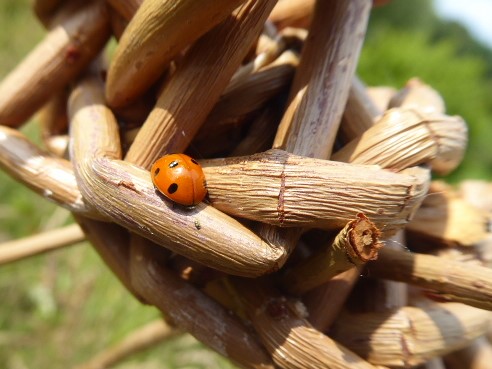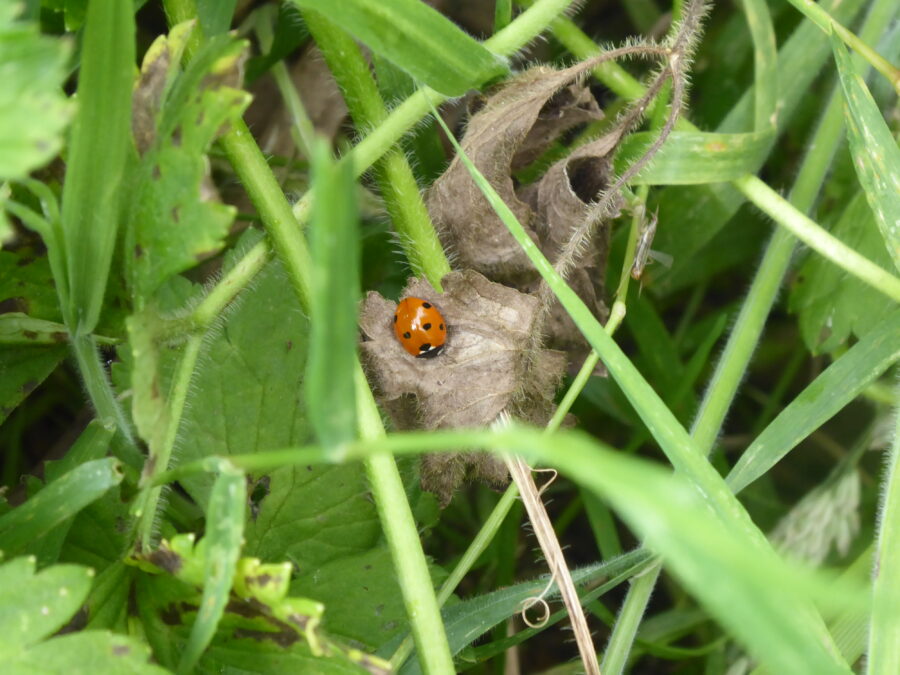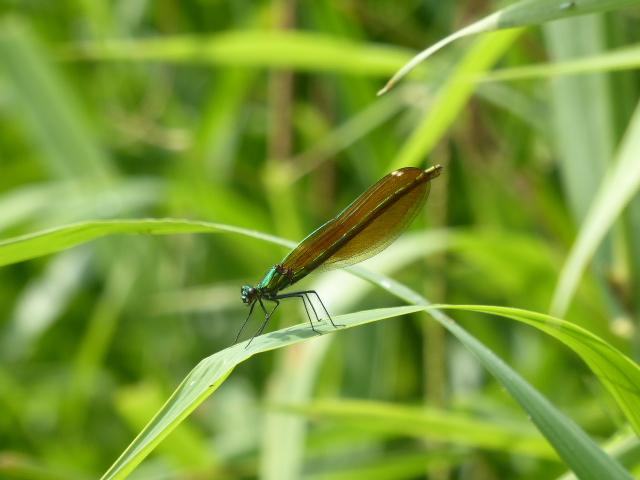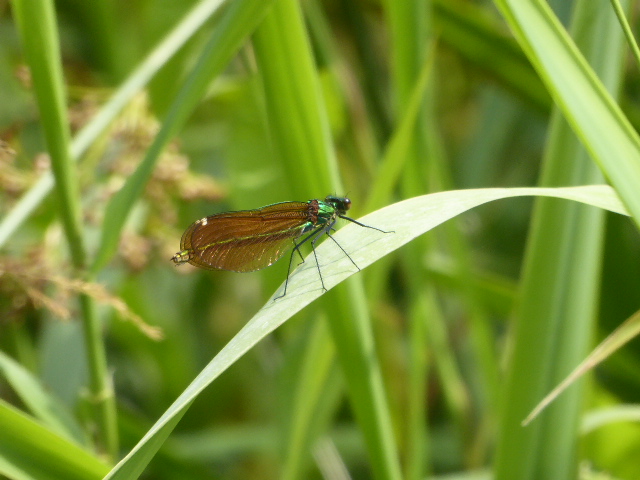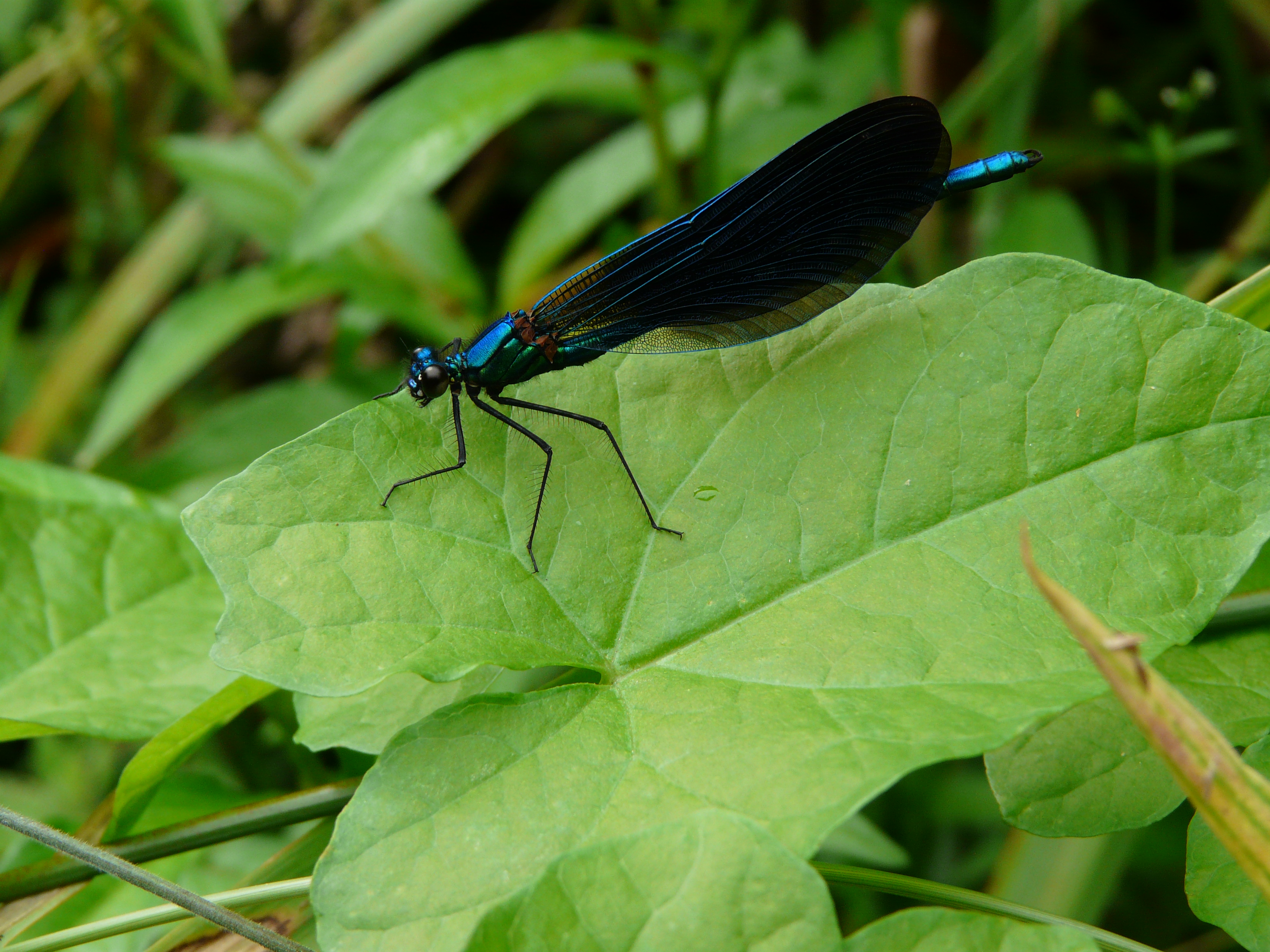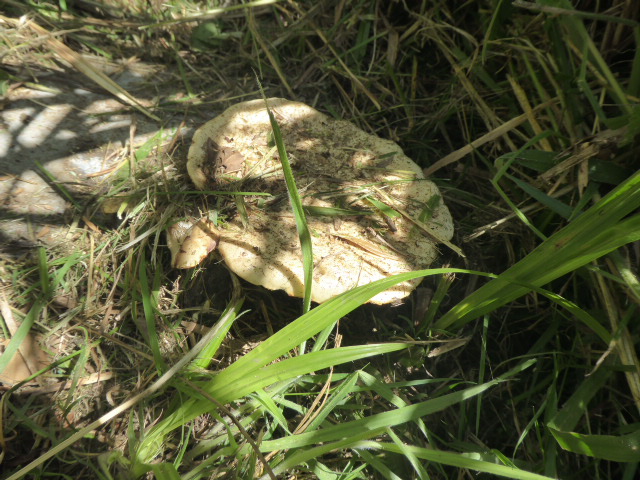The Yellow Dung fly is common especially where there are cattle. There were cattle in the fields across the valley from us a few weeks ago. That said, it will breed on dung from a variety of animals including dogs, of which there are many locally. The adult flies eat insects and nectar. The larvae, which hatch out in the dung, eat other insect larvae that have also hatched out in the dung.
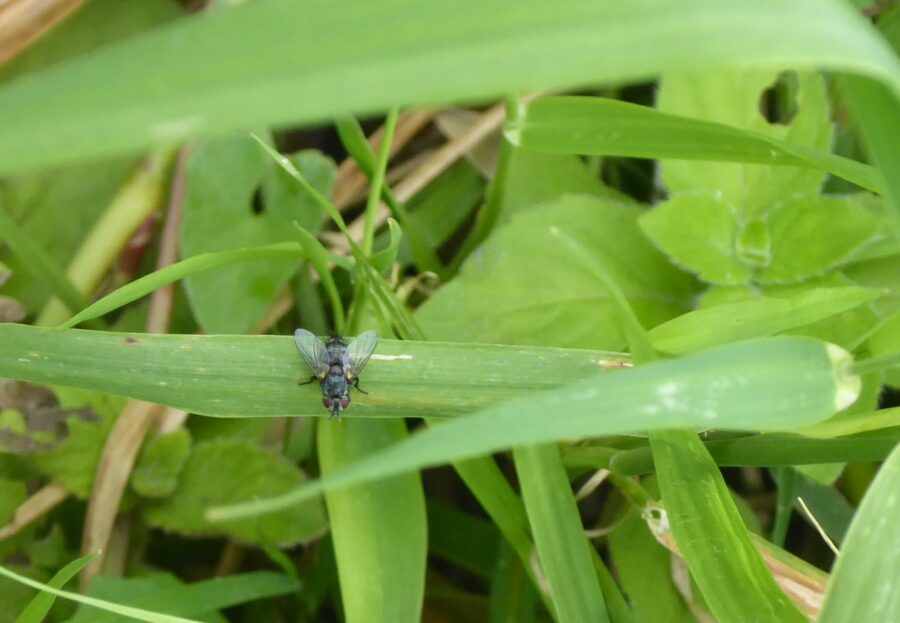
I wasn’t expecting to see a housefly in the watermeadow, but I suppose they have to come from somewhere. They eat rotting plant matter as well as carrion and animal dung.
The most interesting things about houseflies are its eyes, mouth, and feet. The eyes of a fly are compound, which means each eye is made up of thousands of simple eyes and the result is a mosaic view, not as detailed as a human eye, but wider-angled. The housefly cannot bite as its mouth is capable only of sucking and sponging up its food after dousing it with digestive juices. The feet can adhere to vertical or overhead surfaces by means of the sticky substance produced by pads on their feet.
